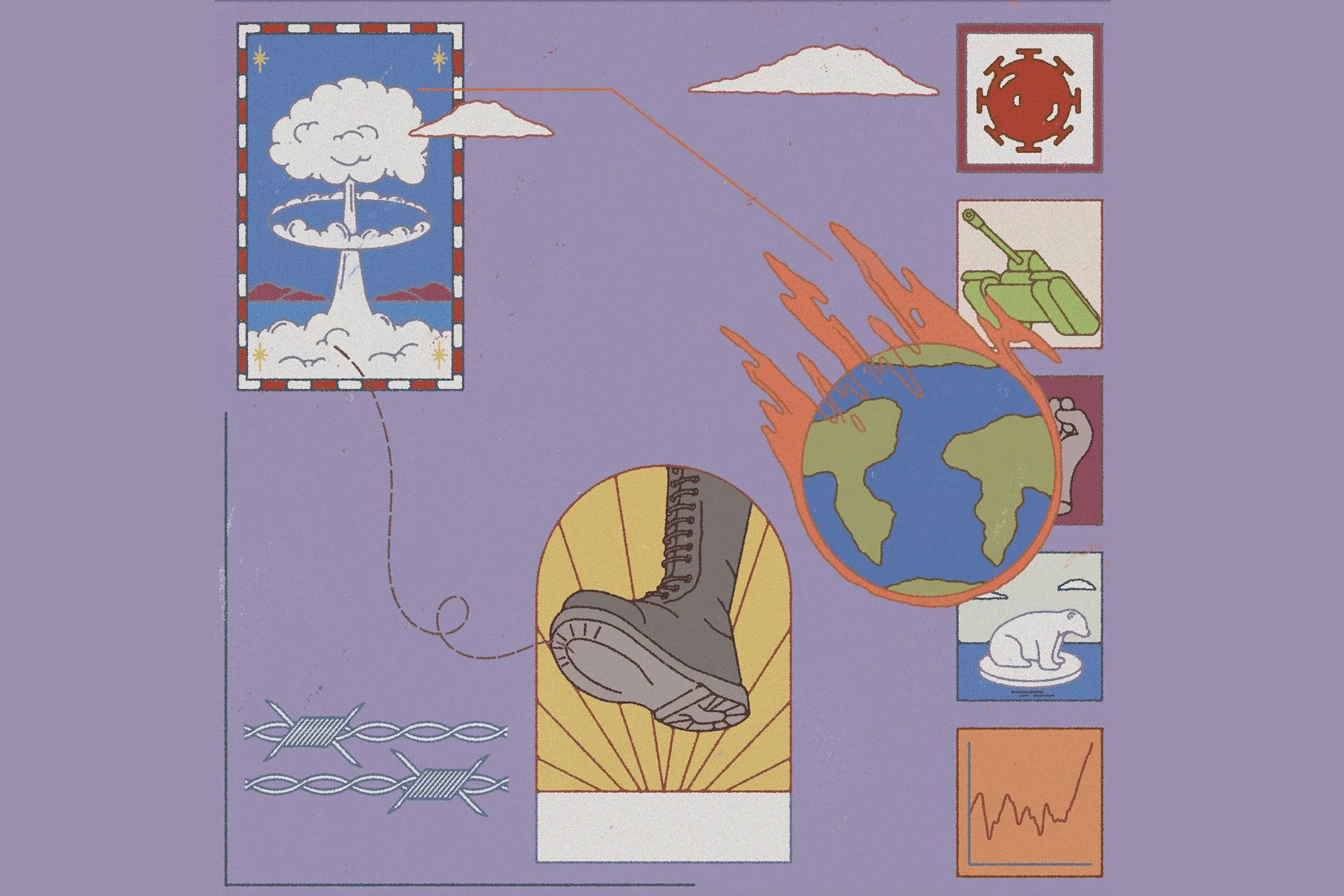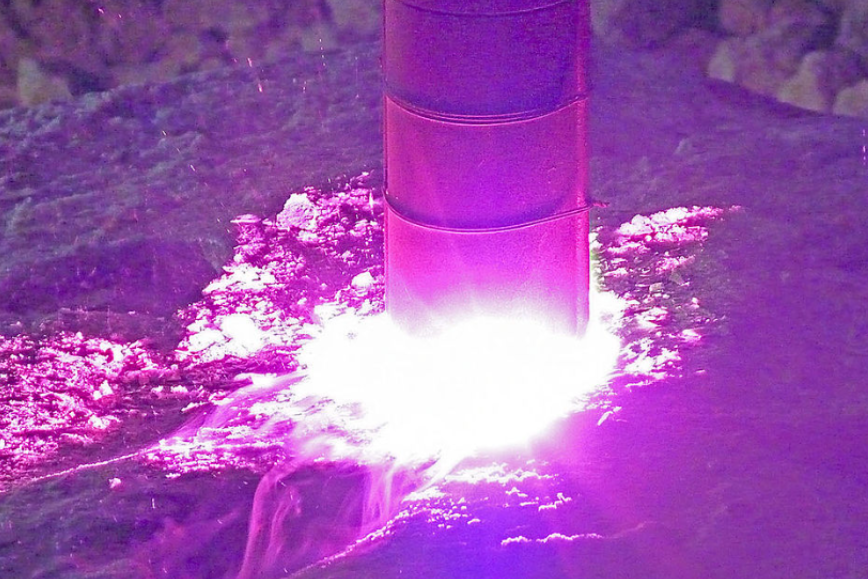National Round Table Conference, October 30, 2008
by Thomas Homer-Dixon
Paper Prepared for the 20th Anniversary Conference of the National Round Table on the Environment and the Economy, Ottawa, Ontario
Thomas Homer-Dixon
CIGI Chair of Global Systems, Balsillie School, Waterloo
Centre for Environment and Business, University of Waterloo
Introduction
The author has more than two decades of experience studying the relationship between various forms of environmental stress and national and international security. This experience includes nearly a decade leading three large international research projects — involving over one hundred experts across a dozen countries — that laid down the first systematic understanding of the links between environmental stress and subnational violent conflict in poor countries.
More recently, the author’s research has focused on complex threats to global security — including climate change and energy scarcity — and the determinants of societal responses to these threats. For over two decades he has written about the political, social, and economic consequences of anthropogenic climate change and its policy implications.
This paper draws on this body of research to argue that the most common “state-centric” concerns about the effect of climate change on the Arctic — including the concerns about how climate change might influence sovereignty, resource access, territorial integrity, and the balance of power among states – are exaggerated. These concerns are grounded in a set of assumptions that may have been appropriate for 19th and 20th century world affairs but are entirely inappropriate as a basis for addressing the 21st century’s challenges. Indeed, these state-centric concerns divert policy attention away from far more critical issues, including the larger climate consequences of Arctic ice loss, such as more rapid melting of the Greenland icecap, invigoration of carbon-cycle positive feedbacks, and potentially dramatic changes in precipitation patterns much farther south affecting global food production.
The paper offers an alternative set of assumptions as a starting point for the analysis of climate change’s implications for the Arctic and Canada.
Climate Change and the Arctic: Key Characteristics
Any complete analysis of the implications of climate change for the Arctic should begin with the best estimates of the magnitude, distribution, and temporal characteristics of climate change for the region, including a detailed account of the latest results for the Arctic of the world’s best general circulation models. The NRTEE should ensure that such information forms a basis for its analysis and policy recommendations.
Two characteristics of climate change, with special implications for the Arctic and Canadian Arctic policy, are worth noting: positive feedbacks and nonlinear response.
Positive Feedbacks:
In coming years, developments in the Arctic, including loss of summertime sea ice and destabilization of the Greenland ice sheet, are likely to be so dramatic that they will drive global climate policy. Because of a number of positive feedbacks — including the ice-albedo feedback (see Figure 1) — warming is disproportionately pronounced in the Arctic, where it is happening about twice as fast as warming elsewhere.
Figure 1: The Ice-Albedo Feedback
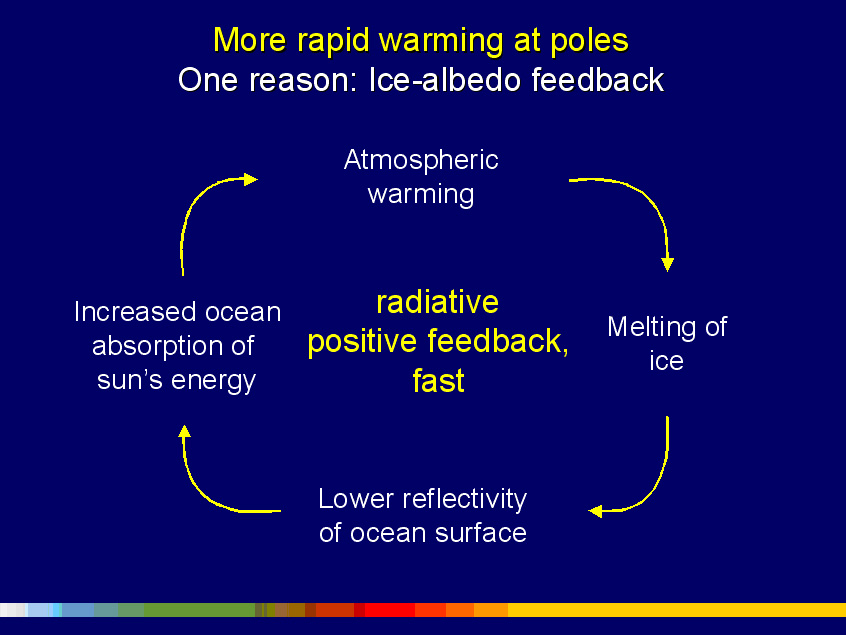
The Earth’s climate system, both its physical and biological components, contains many feedbacks. One of the most significant recent advances in climate science has been an improved understanding of the relative balance between positive (self-reinforcing) and negative (self-equilibrating) feedbacks. Research now indicates that the climate system’s positive feedbacks outnumber and, in their aggregate force, strongly outweigh its negative feedbacks.1 James Hansen and colleagues write:
“Palaeoclimate data show that the Earth’s climate is remarkably sensitive to global forcings. Positive feedbacks predominate. This allows the entire planet to be whipsawed between climate states. One feedback, the ‘albedo flip’ property of ice/water, provides a powerful trigger mechanism. A climate forcing that ‘flips’ the albedo of a sufficient portion of an ice sheet can spark a cataclysm. . . . Recent greenhouse gas (GHG) emissions place the Earth perilously close to dramatic climate change that could run out of our control, with great dangers for humans and other creatures.2“
Climate scientists have successfully incorporated into their climate models many feedbacks that operate directly on the temperature of air or water, like the ice-albedo feedback. But they have made less progress incorporating feedbacks that operate on the atmosphere’s concentrations of greenhouse gases or that affect the cycle of carbon between air, land, oceans, and organisms. Unfortunately, these feedbacks may ultimately be far more important for the stability of the planet’s climate system.
Some of these carbon-cycle feedbacks will operate mainly in Earth’s high latitudes. For instance, warming is causing large areas of permafrost to melt in Alaska, Canada, and Siberia. As this permafrost melts, its organic matter starts to rot, releasing carbon dioxide and methane (molecule for molecule, methane traps far more heat in the atmosphere than carbon dioxide). In September and early October this year, Russian research expeditions along the northern coast of Siberia found evidence that large quantities of methane were being released from methane hydrates under the seabed, perhaps as a result of warmer coastal waters and surface runoff from Siberia.
Warming is also propelling a widening beetle infestation this has killed enormous tracts of pine forest in Alaska and British Columbia. This latter infestation may soon spread across the Rocky Mountains into the vast boreal forest that extends east across Canada to Newfoundland. Dead and dying forests are vulnerable to wildfires that could emit staggering quantities of carbon. Recent research shows that between 2000 and 2020, the beetle infestation in British Columbia will cause almost a billion tons of carbon dioxide to be released into the atmosphere, five times the annual emissions of the gas from the entire Canadian transportation fleet.3
Other positive feedbacks in the carbon cycle involve the oceans. Each year, the oceans and land currently take up about half the carbon dioxide that humans emit into the atmosphere. As oceans warm, they absorb less carbon dioxide, partly because the gas dissolves less readily in warmer water, and partly because warming will reduce the mixing between deep and surface waters that provides nutrients to carbon dioxide-absorbing plankton. And when oceans take up less carbon dioxide, warming will worsen.
Policymakers do not, for the most part, grasp the implications of positive feedbacks in Earth’s climate. Yet they are an urgent concern, because once they begin operating forcefully, warming could become its own cause, accelerating to such a degree that humankind cannot stop it even with severe cuts in greenhouse gas emissions.
Nonlinear Response:
Nor do policymakers grasp the implications of nonlinear climate change. Paleoclimatological evidence drawn from ice cores, coral, sediments and the like indicate that the climate does not always respond linearly to perturbations. Flows of energy within the atmosphere and oceans on occasion undergo wholesale reorganization. Because, in large part, of the operation of feedbacks, Earth’s climate system likely has multiple discrete equilibria. A shift to a new equilibriium, should it occur, would not be reversible in a time frame relevant to human civilization.
Developments over the last two summers in the Arctic illustrate the potential nonlinear behavior of Earth’s climate system. Although the total area of ice in September fluctuates from year to year, in the last two decades it has generally declined, almost certainly because of carbon-driven global warming. During the summer of 2007, the ice cap shrank at a record-breaking pace; at its minimum it was almost 39 percent smaller than the average from 1979 to 2000. This past summer it was down about 33 percent from the average (see Figure 2)
Figure 2: 2007-08 Arctic Sea-Ice Melting: Divergence from Trend
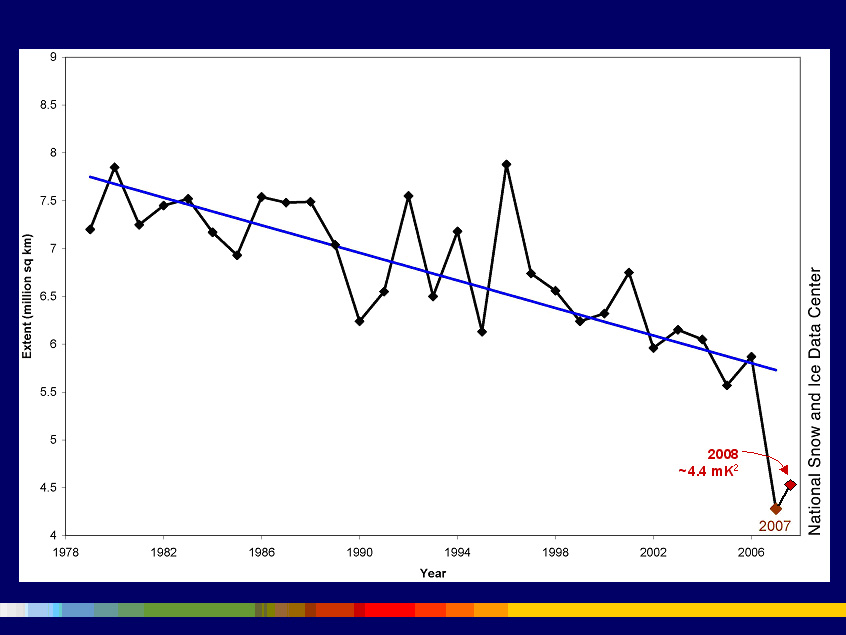
Figure 2 shows the minimum Arctic sea-ice extent, reached usually around mid-September each year, for the last three decades, with an estimate (as of September 12 this year) for 2008.
A couple of years’ dramatic melting may be a random event. But the ice loss of recent years puts the Arctic decades ahead of model predictions, indicating that climate change may be worse than expected. Indeed, the extraordinary loss of sea ice during the summers of 2007 and 2008 suggest that we may in fact be witnessing the first nonlinear “flip” in a major feature of Earth’s climate system — the cyrosphere — as a result of anthropogenic climate change.
Although media and policy attention have focused on the direct effects of sea-ice loss on sovereignty, resource extraction, and transportation in the Arctic basin itself, the consequences of this loss will almost certainly extend around the world. Scientists do not have a precise understanding of these consequences, but there are reasons for great concern. The area above the Arctic Circle represents nine percent of the surface area of the planet above the Equator. As this region loses sunlight-reflecting ice and gains sunlight-absorbing open water, energy circulation across the northern half of the planet will also shift.
Scientists are worried, in particular, about the effect on Hadley cell circulation. In the northern hemisphere, this circulation consists of three important cycles between the equatorial region and the pole (see Figure 3). The polar cell derives much of its force from the sinking of cold dense air at the top of the planet. Loss of the Arctic sea ice, and warming of the sea and atmosphere at the North Pole could cause the polar cell to break down, affecting the jet streams that travel along the interface zone between the polar and Ferrel cell. This could in turn alter storm tracks, rainfall patterns and food production much further south.
Figure 3: Northern Hemisphere Hadley Cell Circulation
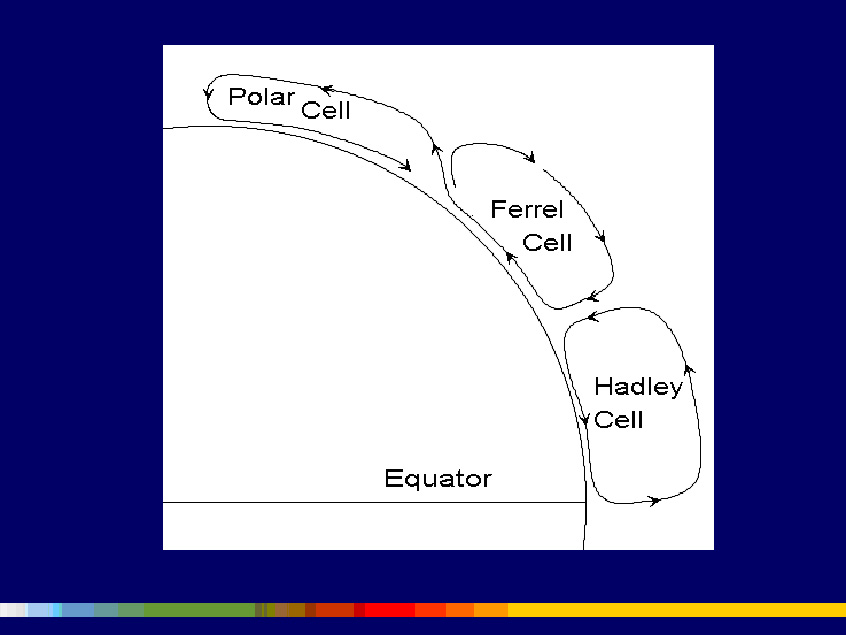
The Greenland ice sheet also appears to be especially sensitive to small changes in the Arctic’s energy balance. Sea-ice loss will probably set off much faster melting of the ice sheet and thus faster sea-level rise.
The ice sheet is the second largest mass of ice in the world, after that in Antarctica. If Greenland were to melt entirely, sea levels would rise by seven metres. During the last interglacial period 125,000 years ago, when temperatures were roughly what they are likely to be at the end of this century, much of the Greenland ice sheet melted, and sea levels were four to six metres higher than they are right now.
The 2007 IPCC report estimated sea-level rise this century at 20 to 60 centimetres – or somewhere around half a metre. However, climate scientists now recognize that the models of ice sheet melting that underpinned the IPCC estimate were radically inadequate. These “static” models did not take into account the movement of large amounts of meltwater, through vertical cracks called moulins, from the surface of the ice sheets to their bottom. The millions of tonnes of water flowing may lubricate the movement of glaciers and increase the speed of glacial movement into the ocean; they also transfer an enormous amount of heat to the bottom, helping to melt the ice sheets from the bottom up.
In the fall of 2007, Robert Corell, chairman of the Arctic Climate Impact Assessment, the principle synthetic report on the state of the Arctic climate, commented on the Ilulissat glacier in northwest Greenland. “We have seen a massive acceleration of the speed with which these glaciers are moving into the sea,” he wrote. “The ice is moving a 2 metres and hour on a front 5 kilometres long and 1,500 metres deep.” He had flown over the glacier and seen “gigantic” holes in it through which vast quantities of melt water were falling. “I first looked at this glacier in the 1960s, and there were no holes. [Now] there are hundreds of them.”4
In light of these and other recent development, a consensus is emerging among climate scientists that oceans will rise by at least a metre this century and that they could plausibly rise two metres. A change of this magnitude would have staggering effects on coastal areas of Canada – on residential areas in British Columbia (especially on the municipalities of Delta and Richmond in the Lower Mainland) and on the ports of Vancouver, St John’s, and Halifax. With a two metre rise, concerns about rebuilding infrastructure and moving populations inland will – in a few decades – become real, even urgent.
Policymakers must keep in mind that the melting of the planet’s great ice sheets, such as that covering Greenland, is likely to be a nonlinear phenomenon. At some indeterminate point in the future, when the conditions have reached a threshold point, the rate of melting will probably jump dramatically, as appears to happening with sea-ice loss in the Arctic. Moreover, once rapid melting of the Greenland ice sheet begins, it is almost certain to be irreversible.
Policy Gaps and Considerations for Policy Development
The climate’s positive feedbacks and its likely nonlinear response to perturbations have significant implications for Canadian Arctic policy. But these implications are rarely acknowledged or understood because policymakers, scholars, and media commentators who consider the topic are largely captive of an outdated causal ontology and theory of international relations.5
Outdated Ontology:
Specifically, a mechanistic ontology — or at least vestigial features of such an ontology — informs virtually all discussion of climate change’s implications for the Arctic. This ontology assumes that both natural and social systems have relatively easily discernible boundaries, that the behavior of such systems is an additive consequence of the behavior of their parts, that effect is proportional to cause, that it is possible to discriminate among multiple causes in terms of their causal power, and that the “gold standard” of explanation involves the identification of a single, necessary and sufficient cause of a given phenomenon.
When it comes to the interactions between climate and human societies, these assumptions are wholly invalid. A mechanistic ontology is inappropriate for investigation of the processes within climate-society systems, because these systems are fundamentally “complex.” They are characterized by causal openness, emergent properties, disproportionality of cause and effect (i.e., nonlinear behavior, as we have seen earlier in this paper), and causal interaction (synergy).
Within such systems, events have no necessary and sufficient causes, small perturbations can have enormous consequences, and causal paths are highly contingent.
Misplaced Emphasis on State-centric Concerns:
Commentators and analysts do not often consider the implications for foreign policy of phenomena in the natural world, like climate change and resource stress. When they do, their common adherence to a mechanistic ontology usually leads them to emphasize these changes’ consequences for state power (see Figure 4). A mechanistic ontology grounds a realist theory of international relations – in which the international system is conceived as a consisting of a finite number of discrete and clearly bounded states seeking to maximize their individual power. By this view, climate change and resource stress operate largely independently of other factors; they bear on states’ interests only to the extent that they affect states’ economic and political power; and they have implications for states’ security only to the extent that they influence the risk of interstate conflict.
Figure 4: The Policy Consequences of Underlying Systems Ontologies
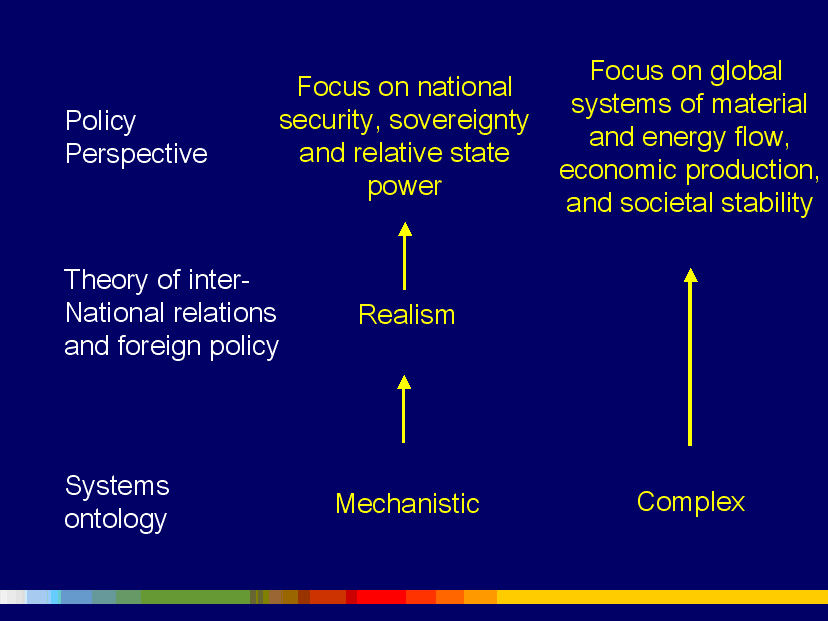
But research over the last twenty years on how natural factors, including resource scarcities and various forms of environmental stress, affect political and social behavior shows that these factors hardly every operate in isolation.6 Rather, they interact synergistically with other ecological, institutional, economic, and political variables to produce a broad range of effects — some of which might bear directly on states’ interests, but many of which do not. These latter effects, including impacts on household livelihoods, may nevertheless have enormous implications for human well-being.
This research has also shown that, to the extent that environmental stress affects states’ interests, causation is almost always indirect. This stress does not directly cause conflict between states; instead it causes various forms of social dislocation — including widening gaps between rich and poor, weakening of governance, and deeper ethnic cleavages — that in turn make subnational conflict in the form of insurgency, ethnic clashes, rebellion, and urban criminality more likely.
Climate change may have implications for global security, therefore, but they are not the implications commonly cited by foreign policy analysts and commentators. By weakening rural economies, boosting unemployment, and dislocating people’s lives in vulnerable poor countries, climate change will increase the frustrations and anger of hundreds of millions of people. Especially in Africa, but also in some parts of Asia and Latin America, it will undermine already frail governments – and make challenges from violent groups more likely – by reducing government revenues, increasing the economic clout of rent-seeking elites, overwhelming bureaucracies with problems, and revealing how incapable these governments are of helping their citizens.
In this light, the concern about the potential national security implications of climate change in the Arctic — including concern about conflicts over shipping lanes and sub-seabed oil and gas resources — is wildly misplaced. Analysts’ reliance on a realist theory of international relations that’s grounded in a mechanistic ontology encourages them to highlight implications of Arctic climate change that are of secondary and tertiary importance to humankind, and even to Canada. Access to the Northwest Passage and to reserves of oil and natural gas in the Arctic basin will seem trivial in a world whipsawed by climate shifts resulting from loss of Arctic sea ice. Policymakers need to focus on what is really important, not on what fits their 20th century worldview.
A recent excellent example of this misplaced focus was the excitement surrounding the release of the US Geological Survey’s findings on the magnitude of petroleum resources in the Arctic basin.7 The USGS report, which appeared on July 23 this year, was accompanied by a breathless podcast and press release headlined “90 Billion Barrels of Oil and 1,670 Trillion Cubic Feet of Natural Gas Assessed in Arctic.”8 Newspapers and magazines were subsequently full of uninformed and uncritical commentary about the prospects for game-changing oil and gas discoveries in the Arctic, with the advent of open water in the Arctic basin. Much of this commentary also included hand-wringing about the risks of conflict between countries over access to these resources in an increasingly energy-scarce world.
The attention given the release of these USGS results, and the types of commentary that accompanied their release, clearly reflected both commentators’ and analysts’ underlying realist and state-centric assumptions about the nature of world order: oil and gas are essential for economic prosperity, national security, and state power, and states and firms will do what is necessary to obtain them, even in remote and inhospitable parts of the world. The implicit, and astonishing, corollary was that in an increasingly oil-scarce, loss of Arctic sea ice was a good thing, because it would make accessible petroleum resources heretofore beyond humankind’s reach.
But the ease with which the USGS report fitted within the prevailing state-centric worldview meant that virtually no analysts looked closely at the report’s underlying data and methodology. Virtually no one pointed out that the total petroleum resource that the USGS estimates to exist in the Arctic would satisfy less than three years of current global oil consumption and less than 16 years of current world gas consumption. Nor did they point out that — in an world of melting and shifting sea ice, more violent Arctic storms, and a surge of icebergs from disintegrating Greenland glaciers – exploring and extracting Arctic petroleum resources might be much more, not less, difficult than it is today.
It also turns out that the USGS has a very poor track record predicting petroleum discovery with the kind of probabilistic methodology it used for the Arctic basin. In 2000, for instance, the USGS used the same methodology to calculate that Earth’s original endowment of recoverable oil was probably around 3 trillion barrels, which, if correct, means we still have more than 2 trillion barrels left.<9 This estimate was widely cited and incorporated into the forecasts of the International Energy Agency in Paris, the U.S. Energy Information Administration, and even Saudi Arabia’s own estimates of its reserves.
We can already gauge the accuracy of this forecast, because it predicted global oil discovery would average about 24 billion barrels a year between 1995 and 2025. But during the first 12 years of this period — that is, till 2007 – average discovery has been only about 6 billion barrels a year, or about a quarter of the predicted amount.
The flaws in the USGS methodology would be obvious to a first-year undergraduate statistics major. Take for instance the estimate for “West Greenland-East Canada” in the recent Arctic assessment. On the basis of extremely limited geological and seismic evidence, the report estimates there is a 95 percent probability that at least one barrel of oil exists in the region, a 50 percent probability that 0.26 billion barrels exist, and a 5 percent probability that 34.5 billion barrels exist. Astonishingly, the USGS then averages across these already very soft figures to produce a “mean” estimate for the region of 7.265 billion barrels. It then adds this number to the estimates achieved the same way for other Arctic regions to create a total figure for expected oil resources in the Arctic.
Even if the USGS’s individual probabilistic estimates for the West Greenland-East Canada region are valid, and there is little reason to think they are, averaging across them produces a grossly misleading result. Indeed, the probability of 7.265 billion barrels existing in the region, even assuming that the underlying estimates are correct, is about 1 in 10. But statistically illiterate commentators were impressed by the apparent precision of figures estimated to three decimal places and took them as fact.
In the view of this paper’s author, even with rapid loss of Arctic sea ice in coming decades, the Arctic basin will not see an enormous expansion of oil and gas exploration. While there may be aggressive exploration, especially for natural gas, in some regions, such as the Beaufort Sea and the seas north of Scandinavia and western Siberia, it will remain on the periphery of the basin and will be constrained by its enormous expense. In light of the difficulties of exploration and extraction, little will occur off either coast of Greenland.
As a result, disputes between countries around the Arctic basin over the delineation of territorial boundaries and rights to exploit sub-seabed resources will remain muted. They will certainly not be central security concerns of any of these nations.
Similarly, while there may be increased shipment of freight and raw materials through the Arctic basin as sea ice vanishes, contemporary commentators are vastly overestimating the significance of these new routes. Sea conditions are likely to remain treacherous for much of the basin, because of drifting chunks or residual ice and very large storms over warming water. Given that there are virtual no safe-harbor ports, mariners and shipping companies will probably conclude that the risk of using routes through the basin generally outweighs any saving in time and fuel.
An Alternative Perspective:
As Figure 4 indicates, a complex-systems ontology grounds a very different view of the implications of Arctic climate change for the world. The focus shifts to the implications of Arctic changes for flows of energy and matter through the biosphere and other global physical systems, for economic production (including, especially, food production) worldwide, and ultimately for societal stability around the planet.
Canadian policy makers should shift their attention and resources commensurately. While policymakers, wedded to an outmoded worldview, fret about what Arctic climate change might do to national power directly in the basin, human well-being could be devastated around the world by cascading consequences of shifts in the Arctic’s energy balance. Ironically, these changes could – in the end – do far more damage to state-centric world order and even to states’ narrowly defined interests than any interstate conflicts we might see happen in the newly blue waters of the Arctic.
1 M. Scheffer, V. Brovkin, and P. Cox, ‘Positive Feedback between Global Warming and Atmospheric CO2 Concentration Inferred from Past Climate Change’ (2006) 33 Geophysical Research Letters L1072.2 James Hansen, et al. “Climate and Trace Gases,” Phil. Trans. R. Soc. A 365 (2007): 1925-54.
3 W.A Kurz, et al. “Mountain pine beetle and forest carbon feedback to climate change,” Nature 452 (24 April, 2008): 987-90.
4 As quoted in P. Brown, “Melting Ice Cap Triggering Earthquakes,” The Guardian, 8 September 2007.
5 The Merriam-Webster Online Dictionary defines “ontology” as “a particular theory about the nature of being or the kinds of things that have existence.” See http://www.merriam-webster.com/dictionary/ontology.
6 For example, see Thomas Homer-Dixon, Environment, Scarcity, and Violence (Princeton: Princeton University Press, 1989).
7 United States Geological Survey, Circum-Arctic Resource Appraisal: Estimates of Undiscovered Oil and Gas North of the Arctic Circle, USGS Fact Sheet 2008-3049 (July 2008).
8 http://www.usgs.gov/corecast/details.asp?ID=87
9 USGS World Energy Assessment Team, U.S. Geological Survey World Petroleum Assessment 2000 available at
http://greenwood.cr.usgs.gov/energy/WorldEnergy/DDS-60/. See also Thomas Ahlbrandt et al., “Future Oil and Gas Resources of the World,” Geotimes (June 2000): 24–25.

